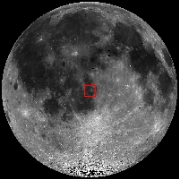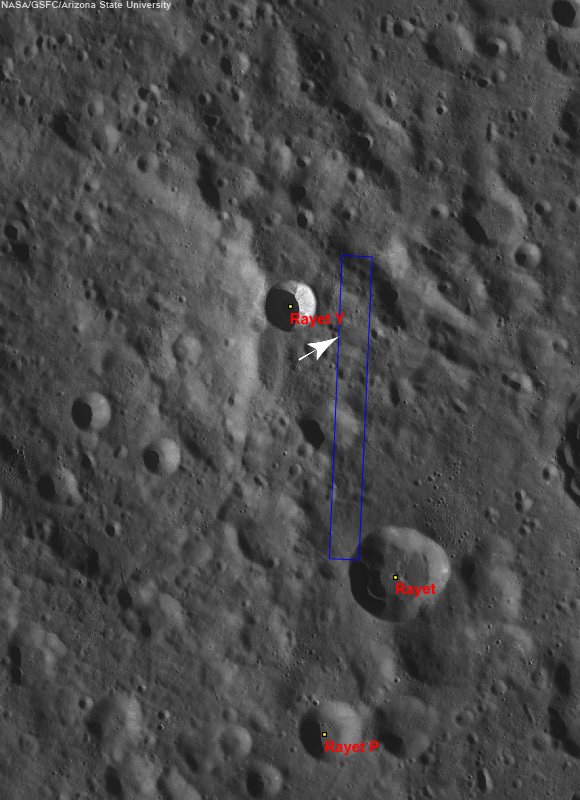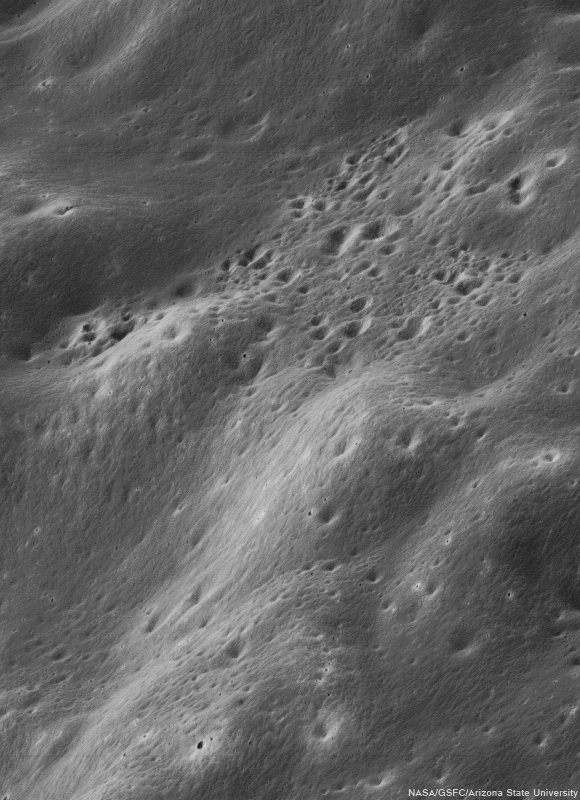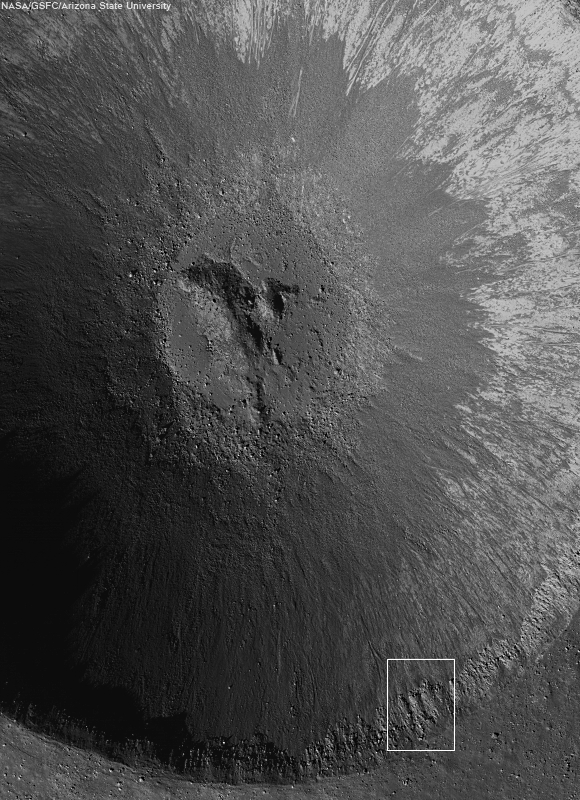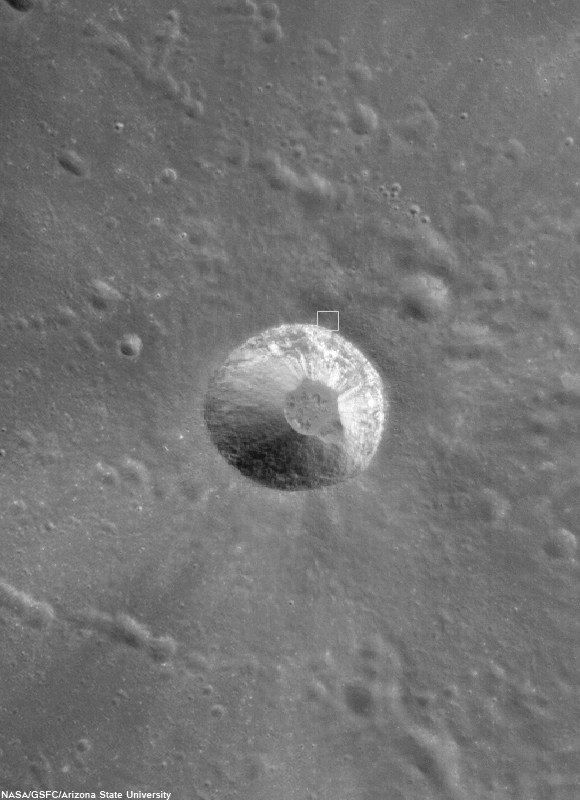Once upon a time, back in the Dark ages when I was a young student of lunar science, an idea was advanced that
Oceanus Procellarum (the largest dark maria on the near side of the Moon) was the site of an ancient, almost obliterated impact basin. This “Procellarum basin” (then called the “Gargantuan” basin – superlatives fail us sometimes) has been invoked to explain any and every observed aspect of lunar geology, from the distribution of the dark mare lavas, the near/far side dichotomy, the thickness of the crust, the composition of highland rocks, and the relative amounts of radioactively generated heat flow in the Moon. Such a useful concept to explain so much!
The acceptance by lunar scientists of a Procellarum basin has waxed and waned over the years. Originally
proposed by Peter Cadogan in 1974, the presence of a large, ancient impact basin covering most of the western near side of this part of the Moon, was advanced to explain the unusually high concentration of the chemical component called
KREEP – (K) potassium, (REE) rare earth elements, and (P) phosphorus. Subsequently,
Ewen Whitaker (noted cartographer of the Moon) carefully mapped landforms, such as ridges and massifs (mountains) over this area, which purportedly showed that the patterns were best explained by a three-ring basin – 3200 km across, centered on the western near side. Whitaker named this feature the “Procellarum basin” after the largest mare region that filled it. Lunar geologist Don Wilhelms fully embraced this interpretation in his classic book
The Geologic History of the Moon, making the Procellarum basin the prime cause for the distribution of geologic units on the Moon.
 |
| LRO topographic map of the Moon, showing the approximate outline of the
"Procellarum" basin on the near side (left) and the South Pole-Aitken
basin on the far side (right). One's real, the other isn't. |
Yet doubts persisted. In 1985,
Peter Schultz and I suggested that the quasi-concentric arrangements mapped by Whitaker, were related to the Imbrium basin (not to an earlier, underlying mega-basin) on the basis of the ring pattern of this putative feature. We also pointed out that the
patterns of rock compositions supposedly explained by a Procellarum basin were not consistent everywhere, at least casting doubt on the predictive power of the basin’s presence. The
1994 Clementine mission gave us our first global topographic map of the Moon. Interestingly, that map dramatically revealed the presence of a circular mega-basin on the far side of the Moon – the enormous 2600 km-diameter
South Pole-Aitken basin. The Procellarum region was also shown to be a low region, but it is not circular (more horseshoe-shaped) and is not as clearly defined as Whitaker’s ring structure suggested. The stock in the existence of Procellarum basin declined.
But some ideas in lunar science never really go away. Since that time, several attempts have been made to resurrect the basin. The latest effort,
just published in Nature Geoscience, comes from mineralogical mapping data obtained from the Japanese
Kaguya (SELENE) mission. The authors of this study claim that
orthopyroxene (a magnesium-silicate mineral) is distributed on the Moon in association with its largest basins –
South Pole-Aitken and
Imbrium. However, in addition to those occurrences, additional outcrops occur in the highlands adjacent to Oceanus Procellarum. Therefore, these rocks were made during the slow cooling of an enormous impact melt sheet created by the impact which formed the Procellarum basin.
The logic here seems weak. It has not been established that orthopyroxene only forms from the slow cooling of an impact melt sheet. When this mineral occurs with the most abundant mineral of the lunar highlands (plagioclase), it makes up a rock type called
norite. Norite is very abundant on the Moon. It is the dominant rock type at the Apollo 14, 15 and 17 landing sites and occurs elsewhere on the Moon in quantity. It is particularly prevalent around the edges of the Imbrium basin and one could argue that norite is a characteristic of that basin and the presence of Procellarum basin to explain its occurrence is unnecessary. Likewise, the existence here of a large differentiated impact melt sheet is inferred from analogy to a terrestrial example, the
Sudbury igneous complex, but even in this case, the impact origin of the terrestrial igneous body is not universally accepted.
Evidence for the existence of Procellarum basin must be sought in its topography. The clarity and preservation of the far side’s South Pole-Aitken basin in the topographic data is surprising. This feature is one of the oldest on the Moon, yet it preserves relief of over 12 km (the depth one would expect of a fresh feature). One might expect such an old feature to be indistinct at best, making the discovery of its large relief one of the surprises of the Clementine mission. At the same time, Procellarum is a vast irregular depression averaging less than 3-4 km deep; its lack of topographic expression is more in line with what one might expect for the oldest basin on the Moon. However, unlike all other lunar basins, a topographic bulge 2-3 km high occurs near the center of this feature (near the crater
Copernicus). No other basin on the Moon (or on any other planet) contains
interior topography higher than the elevation of its topographic rim; at SPA, all of the terrain within the 2600 km diameter rim crest is lower than its rim. The unusual relation of a bulge within Procellarum does not support the concept that it is an impact basin. It seems more likely that it is either a feature of internal origin (possibly related to early melting episodes) or a coalescence of several overlapping impact craters and basins.
 |
| The elliptical South Pole-Aitken (SPA) basin, mostly on the Moon's farside though it's mountainous outer ring encompasses the the nearside's polar south and the Moon's lowest elevations. The oldest and largest of the Moon's definitively identified impact basins, recent studies appear to have pushed it's formation back beyond 4.1 billion years ago, within less than 500 million years after the formation of Earth and Moon [NASA/GSFC/LOLA]. |
|
As we search for the truth, Procellarum basin may well crop up again. But for today and contrary to the current space press, the new results do not uniquely point to the existence of a large basin here. In fact, the observations tend to support previous ideas that it is the smaller, overlying Imbrium basin that is associated with a large regional ejecta blanket of roughly noritic composition.
Originally published at his Smithsonian Air & Space blog The Once and Future Moon,
Dr. Spudis is a senior staff scientist at the Lunar and Planetary Institute.
The opinions expressed are those of the author and are better informed than average.







